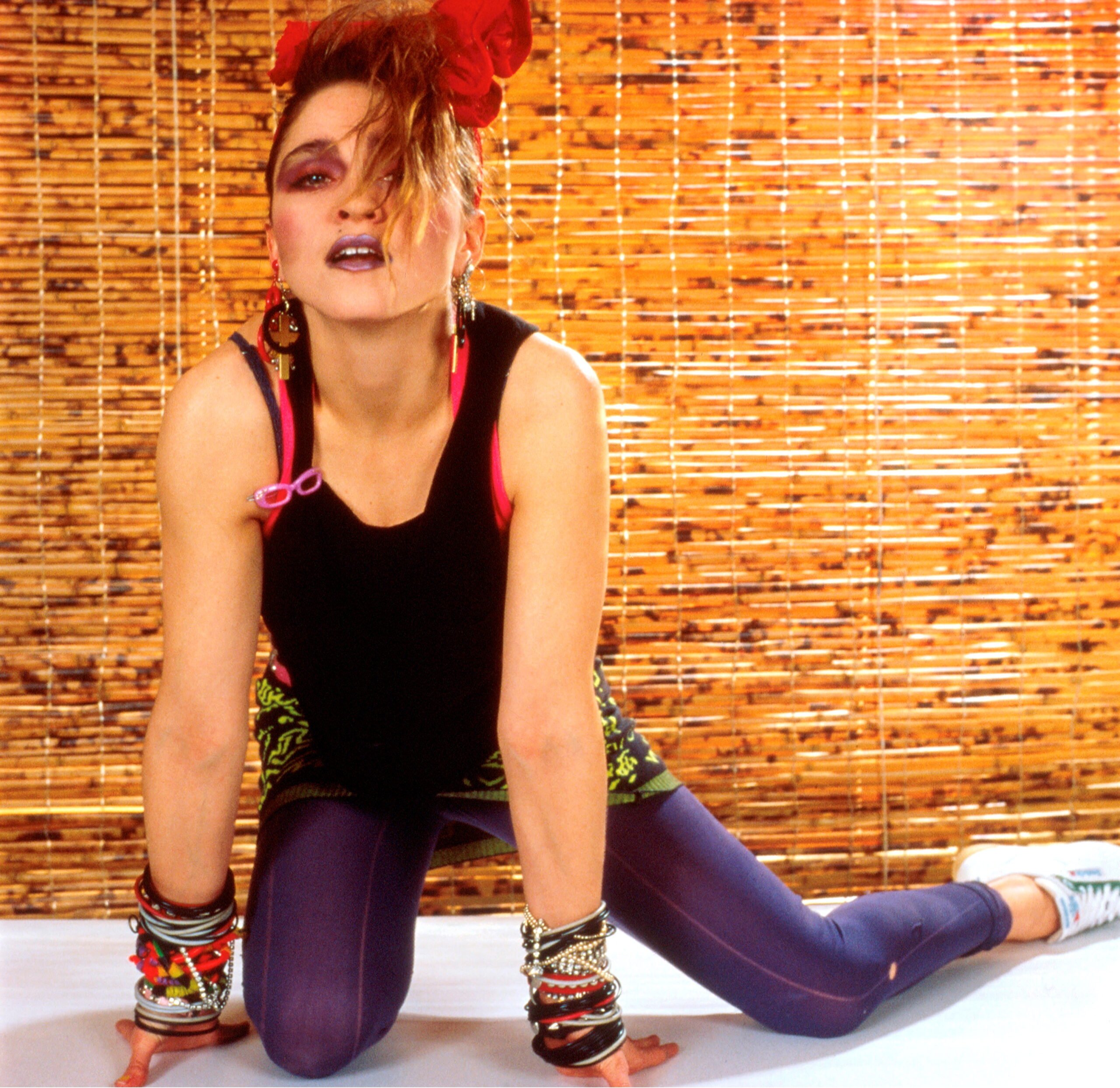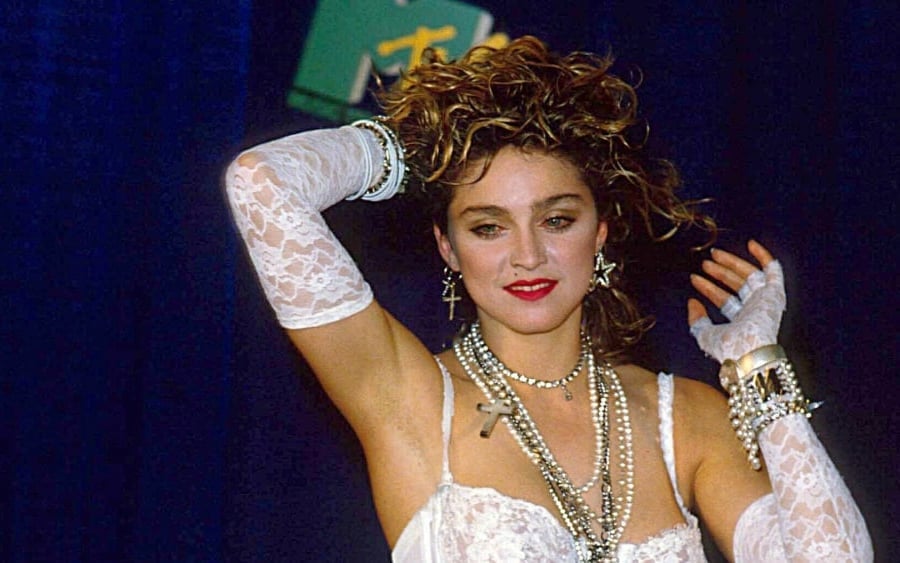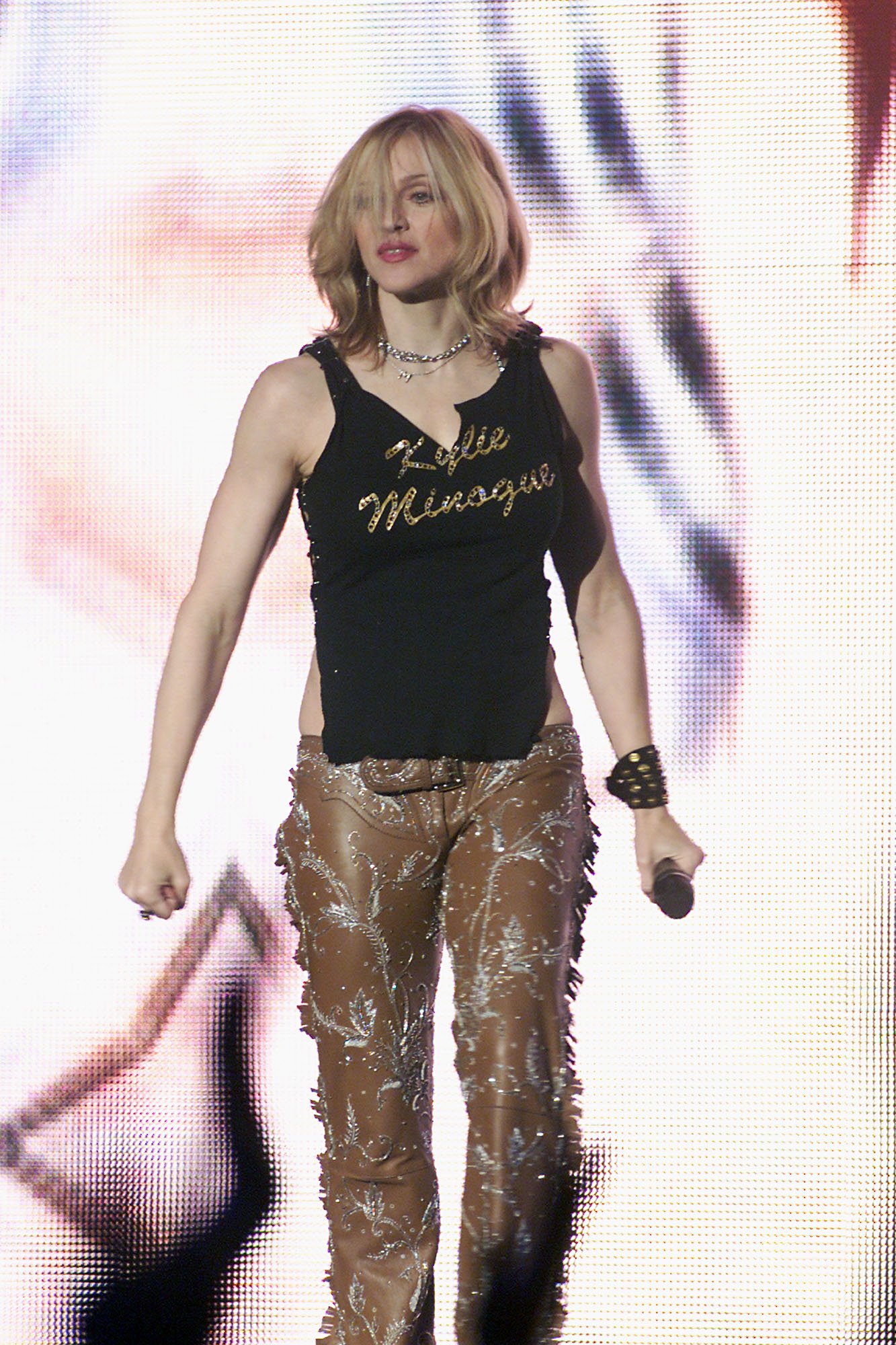There are pop stars, there are fashion icons, and then there’s Madonna—the singular force who’s spent four decades shapeshifting through the cultural zeitgeist like it’s her personal closet. Born Madonna Louise Ciccone on August 16, 1958, the Michigan native arrived in New York in the late ’70s with $35 in her pocket, a dream in her head, and a penchant for taking risks—sartorially, musically, and otherwise. Forty-plus years later, she’s still rewriting the rulebook on what a woman in pop (and fashion) can look like, wear, and say.


The ‘80s: Lace, Crucifixes, and a Pop Punk Prayer
Madonna’s breakout in the early ’80s wasn’t just a musical moment—it was a fashion earthquake. With Like a Virgin, she cemented her image: messy peroxide hair under lace bows, stacks of jelly bracelets, layered rosaries draped over corsets. It was DIY Catholic camp meets downtown punk, a look cobbled together from East Village thrift stores and designer one-offs. Every teenager from Detroit to Tokyo tried to replicate it, proving that “Madonna wannabes” were not just a phenomenon but a market segment. She didn’t just wear clothes; she weaponised them.





The ‘90s: Body Politics and Power Dressing
By the ’90s, Madonna’s style took on chameleon precision. The Jean Paul Gaultier cone bra at the Blond Ambition Tour became as famous as the setlist. She slipped seamlessly from Hervé Léger bodycon to grunge-era plaid, from Hollywood glamour in Evita press tours to rave-ready Versace chainmail. This was the decade she made power dressing sensual, teaching a generation that minimalism didn’t have to be meek.




The 2000s: English Roses and Disco Queens
If the early aughts belonged to anyone, it was Madonna on horseback, literally—think tweed blazers, jodhpurs, and riding boots after her marriage to Guy Ritchie. But she balanced her country pursuits with glitterball grandeur in the Confessions on a Dance Floor era: pink leotards, Farrah Fawcett hair, and enough Swarovski crystals to power Studio 54. Here was a woman equally at home on an English estate and under a disco ball—and she wanted you to know it.





The 2010s to Now: Red Carpets, Rebel Hearts, and Cultural Reckonings
Age has never softened Madonna—if anything, it’s sharpened her fashion focus. In recent years, she’s donned matador jackets at the Grammys, rocked Givenchy couture on the Met Gala steps, and championed a new guard of designers like Willy Chavarria, whose bold suiting and socially charged narratives align with her appetite for statement dressing. She’s equally at home in custom Gucci as she is in downtown upstarts, proving she can still spot the next wave before it crests.
But the latter part of her career hasn’t been without critique. While her impact on fashion and pop culture is undeniable, well-considered debates have emerged around her appropriation of Black and queer cultures—particularly from subcultures like ballroom, which she popularised to mainstream audiences in the Vogue era without fully crediting its originators. Her long history of borrowing from marginalised communities has sparked necessary conversations about cultural exchange versus exploitation, especially in an era that demands greater accountability.
In the social media age, where every outfit and gesture is instantly dissected, Madonna remains a master of narrative control. Whether you love or hate what she’s wearing—or the statement she’s making—you’re talking about her. And for Madonna, that’s always been the point.
The Cultural Legacy
Madonna’s style isn’t just an aesthetic journey—it’s a manifesto. Every reinvention has been a statement about autonomy, power, and refusal to be defined by the male gaze or industry ageism. She’s paved the way for the likes of Lady Gaga, Beyoncé, and Dua Lipa, artists who understand that fashion is an extension of music, a way to push the story forward.
Yet her legacy is a complex one. For every groundbreaking moment of self-expression, there are chapters that force a more critical look—moments where her boundary-pushing blurred into cultural appropriation, particularly from Black and queer communities whose influence she has worn, both literally and figuratively. That tension is part of the full picture: a career built on provocation, reinvention, and the constant interplay between admiration and critique.
Today, at 66, Madonna has wrapped her Celebration Tour, a retrospective that doubles as a runway for her greatest hits—and, perhaps, a reminder that her reign has always thrived in the grey areas. The lesson? True style icons aren’t static. They evolve, they disrupt, they polarise. And whether she’s in Gaultier couture or Luar tailoring, Madonna remains exactly what she’s always been: impossible to ignore.
This story first appeared on GRAZIA USA, Author: David Ruff.
READ MORE
Arden Cho on Quashing Stereotypical Asian-American Roles
Beyoncé Hosts A Destiny’s Child Reunion At Her Final ‘Cowboy Carter’ Show
Hailey Bieber Reacts To Justin Bieber’s Surprise Album Announcement
